#Eco Building Materials
Explore tagged Tumblr posts
Text
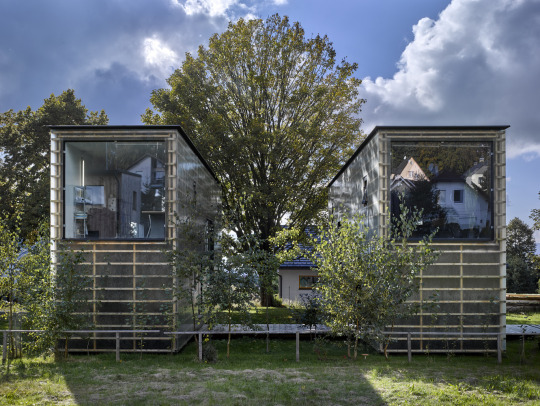
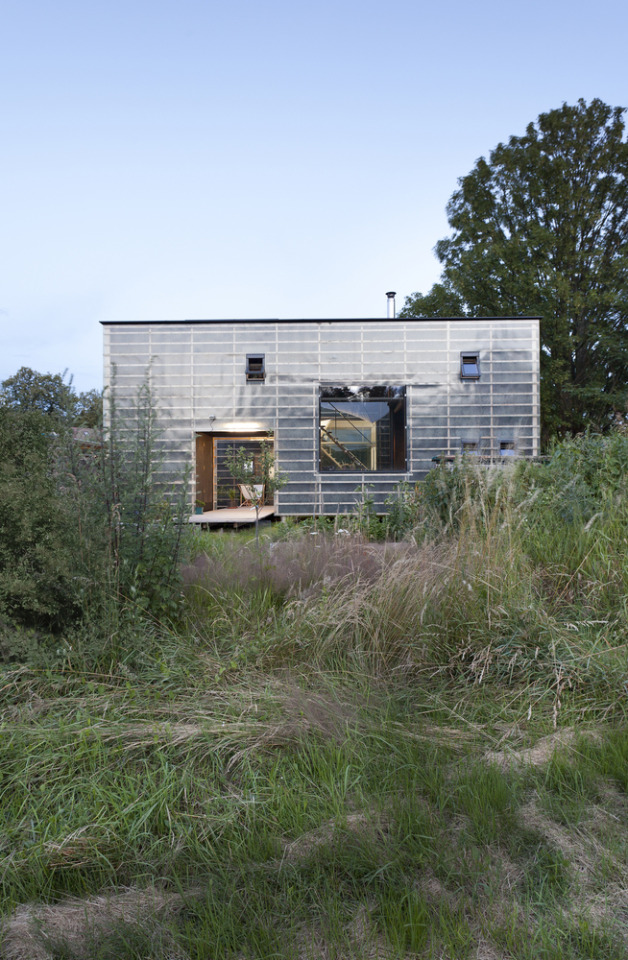
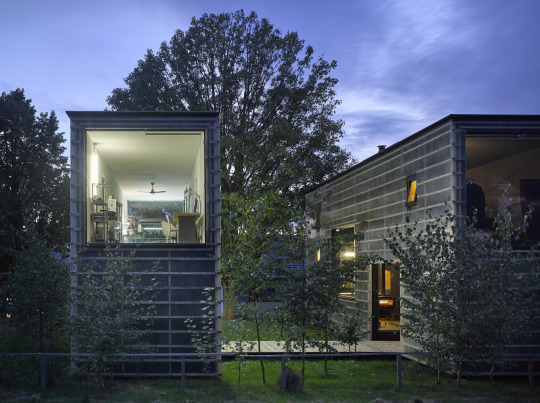

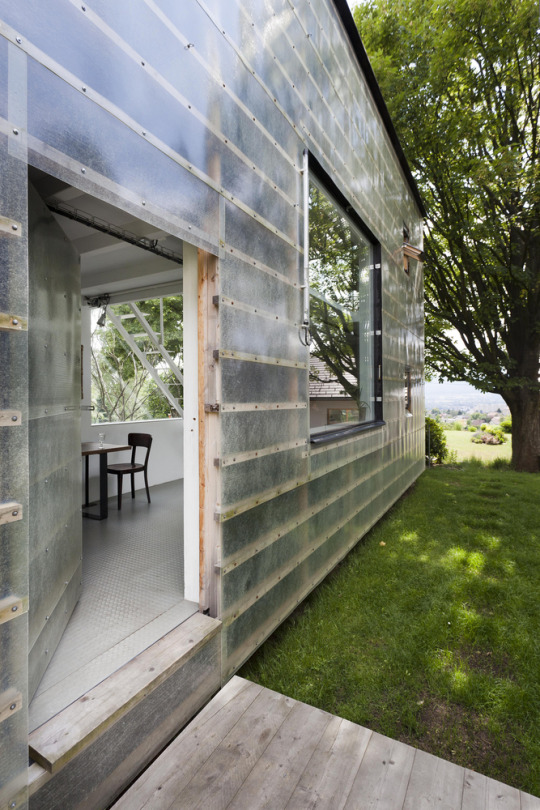
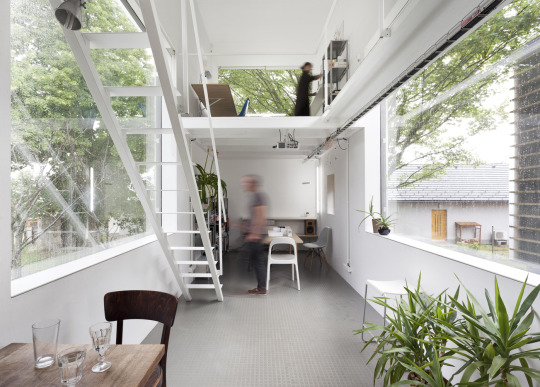
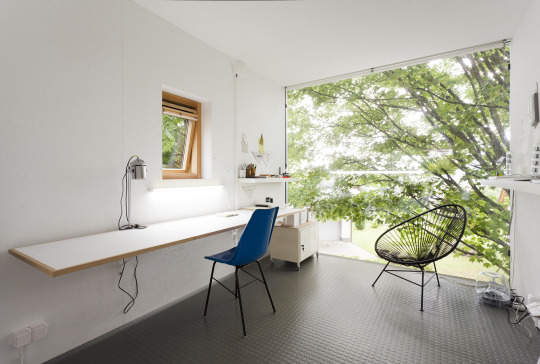
Zen Houses, Liberec, Czechia - Petr Stolín Architekt
#Petr Stolín Architekt#architecture#design#building#modern architecture#interiors#house#minimal#plastic#recycled materials#transparent#light#steel#low cost#eco home#tiny home#garden#cool houses#czechia#studio
282 notes
·
View notes
Text

drew this in class today!


Thought I’d add this text exchange too.
#mr grizz#salmon run#club penguin#herbert p bear#I’ve never drawn Herbert before go easy on me#Also I know for a fact Herbert has never purchased a single thing from a store on cpi in his entire wretched life#And he in fact is incredibly eco-friendly with how he uses recycled material to build his machines and is vegetarian#But it’s funny I think so I don’t care. He’s a capitalist at heart
13 notes
·
View notes
Text
Finally finished sweet tooth s3. Having incredibly mixed feelings
#love the show. love it a lot. about to be a bitch in the tags anyways#it was. so so messy. they needed another season so bad. the alaska trip took up so much of the comics#and that was with the previously established cast#in the show they introduced a million new characters. gave us no time to get to know them before they were thrown head first into the plot#and condensed an arc that was almost half of the comics into the span of like 5 episodes#my boy singh. oh how they massacred by boy#i mean. okay. in the context of the show the arc wasn't horrible for him.#but i think his survival in the comic and his dedication of his life to making up for the mistakes of his past by helping people and hybrids#would've been so much more powerful than his random self sacrifice at the end of the show.#bc honestly it just seems like another impulsive act in his moral flip flop he'd been having for the last few episodes#rather than active choice to be better#and honestly i wanted to see his delusional paranoid religious breakdown from the comics put to screen so bad#it would've been great#i do like that he turned against zhang the second she started trying to talk about rani. that shit slapped#the several fake outs about Jepp's death were so stupid and unnecessary and repetitive#why are you baiting everyone. you're going to piss off the hardcore comic fans waiting for his death and confuse the show fans#either commit to killing him or stop pretending like you're brave enough to do it#why did they flip back so hard into the mystical vaguely eco fascist backstory and outcome of the comic#after spending two seasons trying to build a more scientific and less 'humanity must end' story for two seasons straight#they tried to make it seem less 'humanity must die' again at the end by ending the virus#which i guess might've been the best outcome available considering the source material and the limitations of it's ending#but idk. it felt weird#the writing this season was so much less subtle. it felt like the characters were constantly monologing directly at the camera#nothing could be left unsaid everyone had to say exactly what they meant#and it was all moral lessons the writers were trying to feed directly to the audience#i feel like they wrote themselves into a corner at the end of the last season#and they expected to have at least one more season to write themselves out of it before the ending#and if not. if this was the plan since the beginning. literally what. WHAT.#can not imagine the people who wrote the last two seasons sitting down and writing this#it won't let me add more tags but i have more thoughts. many more. tumblr is silencing me for speaking the truth /j
8 notes
·
View notes
Text
Basalt Fiber Reinforcement in Construction: A Sustainable Paradigm Shift
Introduction In the contemporary construction landscape, a notable shift towards sustainable and eco-friendly building materials is underway. Among the alternatives gaining prominence is basalt fiber reinforcement, positioning itself as a compelling substitute for traditional steel reinforcement. This transition is fueled by a collective desire to reduce environmental impact and elevate the…
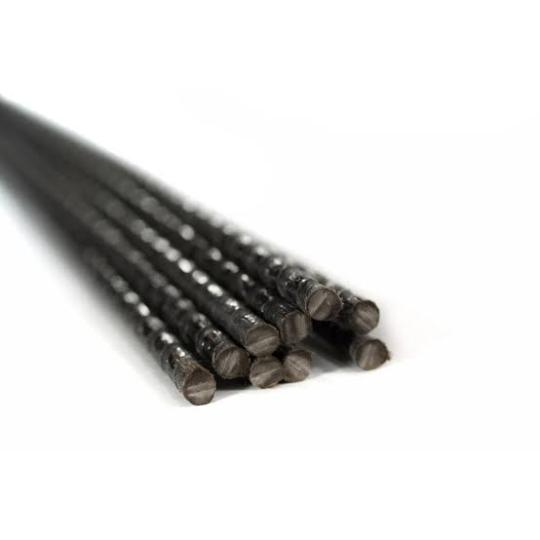
View On WordPress
#alternative to steel reinforcement#basalt fiber applications#basalt fiber properties#Basalt fiber reinforcement#basalt mesh in concrete#BFRP composites#construction industry sustainability#corrosion-resistant materials#durability in construction#eco-friendly building#environmental impact of construction#future of construction materials.#green building practices#lightweight construction materials#seismic resilience in buildings#steel replacement in construction#strength-to-weight ratio#Sustainable Construction Materials#sustainable structural design#thermal insulation in construction
2 notes
·
View notes
Text
How Sustainable & Eco-Friendly Building Materials are Transforming Construction Industry
Explore how sustainable and eco-friendly building materials revolutionise the construction industry. From reducing carbon footprints to improving energy efficiency, these innovations pave the way for greener, more cost-effective construction practices.
0 notes
Text
Unlocking Energy Efficiency: The Importance of Thermal Insulation in Saudi Arabia
In the heart of Saudi Arabia, where soaring temperatures can lead to soaring energy bills, the need for effective thermal insulation has never been more critical. As energy costs rise and the demand for sustainable living grows, homeowners and businesses alike are turning to innovative solutions to enhance their buildings’ efficiency. This is where RNS KSA comes into play, offering premier insulation services that ensure comfort without compromising on energy savings.
Why Thermal Insulation Matters
Thermal insulation is essential for maintaining comfortable indoor temperatures, especially in the extreme climates of Saudi Arabia. By reducing heat transfer between the outside and inside of a building, insulation helps keep interiors cool during the blistering summer months. This not only enhances comfort but also significantly lowers energy consumption, making it a win-win for both the environment and your wallet.
The construction industry in Saudi Arabia is rapidly evolving, and energy efficiency is now at the forefront of this transformation. High-quality building materials that feature advanced insulation properties are becoming standard in new developments. Investing in effective thermal insulation can lead to substantial savings on air conditioning costs, which are a significant portion of monthly energy bills.
RNS KSA: Your Partner in Energy Efficiency
RNS KSA specializes in providing top-tier thermal insulation solutions that cater to the unique demands of the Saudi Arabian climate. Our commitment to eco-friendly solutions ensures that our products not only enhance energy efficiency but also contribute to a sustainable future. We understand that every building has distinct needs, which is why we offer tailored insulation services that are designed to meet specific requirements.
Our expert team is dedicated to helping you choose the right insulation materials for your project. From spray foam to fiberglass, RNS KSA utilizes only the best products that comply with international standards. By focusing on HVAC efficiency, we help reduce the load on your heating and cooling systems, leading to longer lifespan and lower operational costs.
The Benefits of Investing in Thermal Insulation
Cost Savings: With rising energy prices, investing in thermal insulation can dramatically reduce your energy bills. The initial cost of installation is often offset by the long-term savings achieved through lower energy consumption.
Enhanced Comfort: Proper insulation keeps your indoor environment stable and comfortable. Say goodbye to hot spots and drafty rooms!
Environmental Impact: By improving energy efficiency, thermal insulation helps reduce your carbon footprint. This aligns with Saudi Arabia’s vision for a more sustainable future.
Increased Property Value: Homes and buildings with quality insulation tend to have higher market values. Potential buyers are increasingly aware of energy efficiency, making insulated properties more attractive.
Noise Reduction: Quality thermal insulation not only manages temperature but also absorbs sound, making your indoor spaces quieter and more peaceful.
Choosing the Right Insulation
When it comes to selecting the best thermal insulation for your building project, it’s important to consider factors such as climate, building design, and intended use. RNS KSA’s team of professionals is here to guide you through the selection process, ensuring you choose the right product that suits your needs and budget.
We also provide comprehensive installation services, ensuring that your insulation is applied correctly for maximum effectiveness. Our commitment to excellence means that we stay updated with the latest techniques and materials in the industry, guaranteeing that you receive the best service possible.
Conclusion
In a country like Saudi Arabia, where energy efficiency is not just a choice but a necessity, RNS KSA stands out as a trusted partner in thermal insulation solutions. By investing in quality insulation, you can achieve significant cost savings, enhance indoor comfort, and contribute to a more sustainable future.
Make the smart choice today. Contact RNS KSA to learn more about our thermal insulation services and how we can help you maximize your building’s energy efficiency. Together, let’s create a cooler, more comfortable environment while being kind to our planet.
0 notes
Text
Synthetic Gypsum Market: A Growing Alternative with Sustainable Potential

In recent years, the synthetic gypsum market has witnessed a substantial rise, largely propelled by industries that value sustainable, cost-effective alternatives to natural resources. Synthetic gypsum, produced as a byproduct from various industrial processes, has carved out a vital role across sectors like cement production, building materials, gypsum board manufacturing, soil amendments, and even dentistry. This market trend is not just about substituting natural gypsum but also about supporting industries with a more environmentally friendly and accessible option.
Synthetic gypsum market size is projected to grow from USD 1.4 billion in 2024 and is projected to reach USD 1.8 billion by 2030, at a CAGR of 4.3%.
Let’s delve into the unique dynamics and potential of synthetic gypsum, highlighting its applications, challenges, and emerging opportunities for industries that are increasingly focused on sustainable growth.
What is Synthetic Gypsum?
Synthetic gypsum is chemically identical to natural gypsum—both composed of calcium sulfate dihydrate. However, unlike natural gypsum that is mined, synthetic gypsum is a byproduct, often generated from industrial processes like flue gas desulfurization (FGD) in coal-fired power plants. When these plants capture sulfur dioxide emissions to reduce air pollution, the process yields synthetic gypsum as a usable byproduct. This environmentally beneficial cycle transforms waste into a resource, aligning with broader sustainability goals.
This "upcycled" form of gypsum can be used almost interchangeably with natural gypsum in many applications, thus reducing the demand for mining activities and conserving natural resources.
Key Factors Driving Market Growth
Sustainable Construction and Building Materials: In today’s world, there’s a growing demand for greener building solutions. Since synthetic gypsum comes from recycled industrial byproducts, it’s an attractive option in the construction industry. It conserves natural gypsum reserves, reduces waste, and helps minimize environmental damage, making it an ideal choice for eco-conscious builders and contractors.
Increasing Regulatory Focus on Environmental Protection: Environmental regulations around air quality have driven more facilities to adopt FGD systems, inadvertently boosting synthetic gypsum supply. Governments worldwide have implemented strict environmental policies to reduce industrial emissions, further encouraging the use of synthetic gypsum. The fact that this byproduct can be reused in critical industries only strengthens its appeal.
Surge in Demand for Gypsum Board: The construction boom, particularly in urbanized and rapidly developing regions, has led to an increased demand for drywall. Synthetic gypsum plays a critical role in gypsum board production, offering a fire-resistant, durable, and easy-to-install building material that is highly valued in the construction industry. With this demand on the rise, synthetic gypsum is increasingly essential to meet production needs.
Growing Agricultural Applications: Agriculture is an emerging avenue for synthetic gypsum, where it acts as a soil conditioner. Gypsum helps improve soil structure, enhance water absorption, and prevent erosion. This application has gained attention worldwide, especially in arid and semi-arid regions where synthetic gypsum can provide essential nutrients like calcium and sulfur, improving crop yield and soil health.
Dental and Medical Fields: While perhaps less known, synthetic gypsum is also used in dentistry to create molds and impressions. Its uniformity and purity make it a great choice for this precision-driven field. This niche application is opening up new avenues for synthetic gypsum, as dental professionals recognize its benefits over traditional materials.
Key Applications of Synthetic Gypsum
Cement Production: In cement production, synthetic gypsum is added to clinker to control the setting time. This not only helps improve the consistency of cement but also enhances its structural properties. With synthetic gypsum as an alternative, cement producers can opt for a sustainable and cost-efficient material, supporting their production processes without compromising quality.
Gypsum Board (Drywall) Manufacturing: Synthetic gypsum has a pivotal role in gypsum board manufacturing, particularly in regions like North America and Europe. Gypsum board, made of a gypsum core sandwiched between paper liners, is essential for interior construction. It offers fire resistance, ease of use, and cost-effectiveness. As construction activities increase globally, especially with new housing and commercial projects, synthetic gypsum's demand is set to grow significantly in this segment.
Soil Conditioner in Agriculture: For agricultural use, synthetic gypsum has shown promise as an effective soil amendment. It can improve soil quality by adding calcium and sulfur, enhancing root growth, and aiding in water absorption. This is particularly beneficial in saline or sodic soils, where gypsum helps to balance the soil structure, allowing for better crop growth and soil health.
Dental and Medical Uses: In the dental industry, synthetic gypsum is highly valued for its use in creating dental molds, impressions, and casts. Due to its chemical consistency and purity, synthetic gypsum is a preferred choice in this field, meeting the precision requirements necessary for high-quality dental applications.
Challenges and Future Opportunities
While synthetic gypsum holds numerous advantages, the market does face a few challenges. Transportation costs can be high due to the weight and bulk of gypsum, which may limit its usage in areas far from production facilities. Quality control is another consideration, as synthetic gypsum derived from different sources can vary, making consistent standards necessary, especially for high-end uses in industries like construction and healthcare.
However, the future looks bright for synthetic gypsum. As sustainable materials gain popularity and industries continue to prioritize recycled content, synthetic gypsum is well-positioned to meet the growing demand. Emerging markets, in particular, offer significant potential as they expand infrastructure and prioritize environmentally friendly resources. Additionally, advancements in synthetic gypsum production processes could further enhance its quality, expanding its application potential across new sectors.
To know more Download PDF Brochure :
The synthetic gypsum market is more than just a substitute for natural gypsum—it’s a sustainable alternative that holds unique value across multiple industries. By repurposing industrial waste, synthetic gypsum helps conserve natural resources, supports sustainable manufacturing practices, and meets the needs of diverse applications. From construction and agriculture to healthcare, synthetic gypsum is making a positive environmental impact, helping industries reduce their carbon footprint and promote greener practices. As industries continue to move towards sustainability, synthetic gypsum’s role is only set to grow, carving a more substantial presence in the global marketplace and contributing to a greener future.
#Synthetic Gypsum Market#Sustainability#Cement Industry#Building Materials#Gypsum Board#Soil Amendments#Eco-Friendly Solutions
0 notes
Text
Explore how TMT bars contribute to sustainable construction by offering energy-efficient production, recyclability, and long-lasting durability. Learn how these steel bars reduce carbon footprints and promote eco-friendly practices in green building projects, making them ideal for modern sustainable architecture.
#TMT bars in green construction#sustainable TMT bars#eco-friendly building materials#energy-efficient steel#green projects
0 notes
Text
The Future of Jamaican Architecture: Trends and Projections
#adaptive reuse#climate resilience#coastal architecture#contemporary design#Cultural Heritage#eco-friendly materials#energy-efficient buildings#green architecture#innovative construction#minimalism#modern buildings#passive cooling#renewable energy#smart cities#solar energy#sustainable design#sustainable urban planning#tropical modernism#urban development#vertical gardens
0 notes
Text
Thinking about new flooring? ⭐️⭐️🌟🌟
👍🙌Choose wisely! Glue-based flooring can release harmful chemicals like formaldehyde, posing serious health risks over time. Opt for Enmansi SPC Flooring—safe, glue-free, and eco-friendly. Protect your family’s health and the planet!🌎🌎
#sustainable living#sustainability#healthy home#glue free flooring#formaldehyde free#eco friendly#spc flooring#spc flooring plank#spc stone flooring#indoor air quality#green building#green material#enmansi flooring#enmansi#spc vinyl flooring#green planet#flooring#flooring solutions#flooring ideas#new flooring
0 notes
Text
Green Cement: The Sustainable Alternative to Traditional Cement Production

Green cement refers to cement produced through sustainable and environmentally friendly means. Traditional cement production involves quarrying, mining, and manufacturing processes that release harmful carbon emissions and pollute the air and water. In contrast, sustainable cement seeks to minimize these environmental impacts through the use of alternative raw materials and production technologies. Alternative Raw Materials One of the primary ways sustainable cement is produced is by substituting traditional raw materials like limestone with more sustainable alternatives. Industrial waste products like fly ash from coal power plants and slag from steel manufacturing are often used to partially replace limestone in sustainable cement. These industrial by-products would otherwise end up in landfills as waste. Using them in cement production diverts them from the waste stream while making better use of resources. Supplementary cementitious materials like rice husk ash and silica fume from silicon manufacturing are other common sustainable raw material substitutes. Low-Carbon Production Processes In addition to raw material substitutions, sustainable Green Cement production focuses on employing manufacturing methods that reduce carbon emissions. Traditional cement kilns rely on fossil fuels to heat ingredients to over 2500 degrees Fahrenheit, releasing large amounts of CO2. Sustainable cement production may utilize alternative fuels like waste wood or tires to reduce fossil fuel usage. Advanced kiln technologies like the suspension preheater can significantly lower energy demands and emissions during the calcining process compared to older dry-process kilns. Carbon capture and storage technology can also help trap and sequester emissions. Some innovative producers are developing carbon-neutral cement through the use of renewable energy or direct carbon mineralization during curing. Additives for Performance Enhancement Certain admixtures and mineral compounds are sometimes added to sustainable cement mixtures to enhance technical performance properties without compromising sustainability goals. Lignosulfonates from paper processing and hydroxycarboxylic acids are examples of commonly used organic additives that can improve workability, strength, and durability at low dosages. Metakaolin, a pozzolan derived from calcined clay, serves as a supplementary cementitious material and microsilica additive in some sustainable cement s, where its fine particles act as nucleation sites facilitating more complete hydration reactions. These types of additives allow producers to engineer sustainable cement blends with properties on par with or exceeding traditional varieties. Get more insights on Green Cement
For Deeper Insights, Find the Report in the Language that You want.
French
German
Italian
Russian
Japanese
Chinese
Korean
Portuguese
Alice Mutum is a seasoned senior content editor at Coherent Market Insights, leveraging extensive expertise gained from her previous role as a content writer. With seven years in content development, Alice masterfully employs SEO best practices and cutting-edge digital marketing strategies to craft high-ranking, impactful content. As an editor, she meticulously ensures flawless grammar and punctuation, precise data accuracy, and perfect alignment with audience needs in every research report. Alice's dedication to excellence and her strategic approach to content make her an invaluable asset in the world of market insights.
(LinkedIn: www.linkedin.com/in/alice-mutum-3b247b137 )
#Green Cement#Eco Friendly Cement#Sustainable Construction#Low Carbon Cement#Environmental Cement#Carbon Neutral Cement#Green Building Materials#Sustainable Cement#Carbon Capture
0 notes
Video
youtube
Futureproof your investment with Innova Panel. Francis Pimentel of the Eco Channel takes a deep dive into the technology of the InnovaPanel, the next generation of structural insulated panels. Learn more as she investigates Future Proofing Your Investment with the InnovaPanel,
#youtube#Eco channel#green building#Ecofriendly#construction#energy efficient#low carbon#building materials#architecture#building science#InnovaPanel
0 notes
Text
Types of Fillers in Construction
Introduction Fillers play a pivotal role in construction, providing stability, strength, and insulation. Their selection is critical, affecting the cost, durability, and environmental impact of a project. This article delves into the various types of fillers utilized in the construction industry. 1. Natural Fillers Natural fillers like sand, gravel, and stone are ubiquitous in construction due to…

View On WordPress
#aerogel insulation in construction#carbon fiber for structural reinforcement#composite fillers in construction#construction aggregate materials#construction filler selection guide#construction fillers#construction industry standards for fillers#construction material innovation#cost-effective fillers for construction#durable fillers for construction#eco-friendly construction fillers#EPS beads in construction#fiber-reinforced concrete#fiberglass in concrete#fly ash concrete filler#graphene in building materials#insulation panels in construction#lightweight construction fillers#mineral fillers in concrete#natural fillers in construction#organic fillers for construction#silica fume in construction#specialty construction fillers#sustainable building materials#synthetic fillers for building#thermal insulation fillers#types of construction fillers
2 notes
·
View notes
Text
Build a greener future, Decarbonization in real estate projects with eco-friendly, sustainable solutions for lasting impact.
#Decarbonization#real estate#sustainability#carbon footprint#green buildings#renewable energy#smart technology#climate change#net-zero emissions#deforestation#urbanization#operational efficiency#eco-friendly materials#environmental impact#financial benefits#government incentives.
0 notes
Text
The Importance of Effective Fire Stopping: A Guide by RSI UAE
Fire safety is a critical aspect of any building’s design and maintenance, yet it’s often overlooked until it’s too late. At RSI UAE, we understand that effective fire stopping is essential to ensuring the safety and integrity of your property. Here’s why fire stopping should be a top priority and how RSI UAE can help you achieve optimal protection.
What is Fire Stopping?
Fire stopping refers to the measures and materials used to seal openings and joints in fire-resistance-rated walls, floors, and ceilings. These seals prevent the spread of fire and smoke between compartments, thus enhancing the overall fire safety of a building. Without proper fire stopping, a fire can quickly spread through these gaps, compromising the building’s structural integrity and endangering lives.
Why Fire Stopping Matters
Life Safety: The primary purpose of fire stopping is to protect occupants by containing the fire within a designated area and providing a safe evacuation route.
Property Protection: Effective fire stopping helps minimize damage by confining the fire to specific sections, thereby protecting valuable assets and reducing repair costs.
Regulatory Compliance: Building codes and safety regulations require proper fire stopping to meet fire-resistance standards. Compliance ensures that your building adheres to legal requirements and avoids potential penalties.
RSI UAE’s Fire Stopping Solutions
At RSI UAE, we specialize in providing comprehensive fire stopping services tailored to your specific needs. Our team of experts is equipped with the latest technology and industry knowledge to deliver high-quality solutions that meet stringent safety standards. Here’s what we offer:
Expert Assessment: We conduct thorough inspections to identify potential fire stopping requirements and vulnerabilities in your building.
Custom Solutions: Based on our assessment, we design and install tailored fire stopping systems using state-of-the-art materials and techniques.
Compliance Assurance: Our solutions adhere to local building codes and international standards, ensuring your property meets all necessary fire safety regulations.
Why Choose RSI UAE?
Choosing RSI UAE means opting for reliability, expertise, and a commitment to safety. Our experienced professionals work diligently to provide effective fire stopping solutions that offer peace of mind and protection. We prioritize your safety and ensure that every aspect of our service contributes to a safer environment.
Get in Touch
Ensure your building is safeguarded against fire hazards with RSI UAE’s expert fire stopping services. Visit our website for more information or contact us today to schedule a consultation. Protect your property and its occupants with RSI UAE — your trusted partner in fire safety.
#RSI UAE#building solutions#thermal insulation#acoustic insulation#UAE construction#energy efficiency#insulation services#soundproofing#HVAC solutions#eco-friendly materials
0 notes
Text
The Importance of Thermal Insulation: Enhance Efficiency and Comfort with RNS Qatar
In the quest for energy efficiency and indoor comfort, thermal insulation plays a crucial role. Proper insulation can significantly impact both residential and commercial buildings by regulating temperature, reducing energy consumption, and improving overall comfort.
What is Thermal Insulation?
Thermal insulation refers to materials or techniques used to slow down the transfer of heat between different areas. This includes keeping heat inside during colder months and preventing heat from entering during warmer periods. Common insulation materials include fiberglass, foam boards, and reflective barriers, each designed to meet specific needs.
Benefits of Thermal Insulation
Energy Efficiency: By minimizing heat loss or gain, thermal insulation reduces the demand on heating and cooling systems. This leads to lower energy bills and contributes to a more sustainable environment.
Enhanced Comfort: Insulation helps maintain a consistent indoor temperature, making spaces more comfortable. It also reduces noise pollution, contributing to a quieter living or working environment.
Environmental Impact: Efficient insulation decreases the overall energy consumption of a building, reducing carbon footprints and promoting eco-friendly practices.
Cost Savings: Although the initial investment in insulation might seem high, the long-term savings on energy bills can outweigh the costs. Insulated buildings also typically have a higher market value.
Types of Thermal Insulation
Fiberglass Insulation: Popular for its affordability and effectiveness, fiberglass is used in walls, ceilings, and floors. It’s known for its high thermal resistance and soundproofing qualities.
Foam Board Insulation: This type provides excellent thermal resistance and is often used in areas where high insulation performance is needed, such as foundations and roofs.
Reflective or Radiant Barriers: Effective in hot climates, these barriers reflect heat away from the building, helping to keep interiors cool.
Installation Tips
Proper installation is key to maximizing the benefits of thermal insulation. Ensure that insulation materials are correctly fitted, with no gaps or compression. It’s often advisable to consult with professionals to guarantee optimal performance and compliance with local building codes.
Conclusion
Incorporating high-quality thermal insulation into your building not only enhances energy efficiency but also improves comfort and reduces environmental impact. For top-notch thermal insulation solutions tailored to your needs, look no further than RNS Qatar. Our expert team is dedicated to providing effective insulation services that meet the highest standards. Contact RNS Qatar today to learn more about how we can help you achieve a more efficient and comfortable building.
#Thermal Insulation#Energy Efficiency#RNS Qatar#Building Comfort#Insulation Benefits#Eco-Friendly Building#Heat Transfer#Insulation Materials#Fiberglass Insulation#Foam Board Insulation#Reflective Barriers#Cost Savings#Building Energy Savings#Insulation Installation#Qatar Insulation Solutions
0 notes